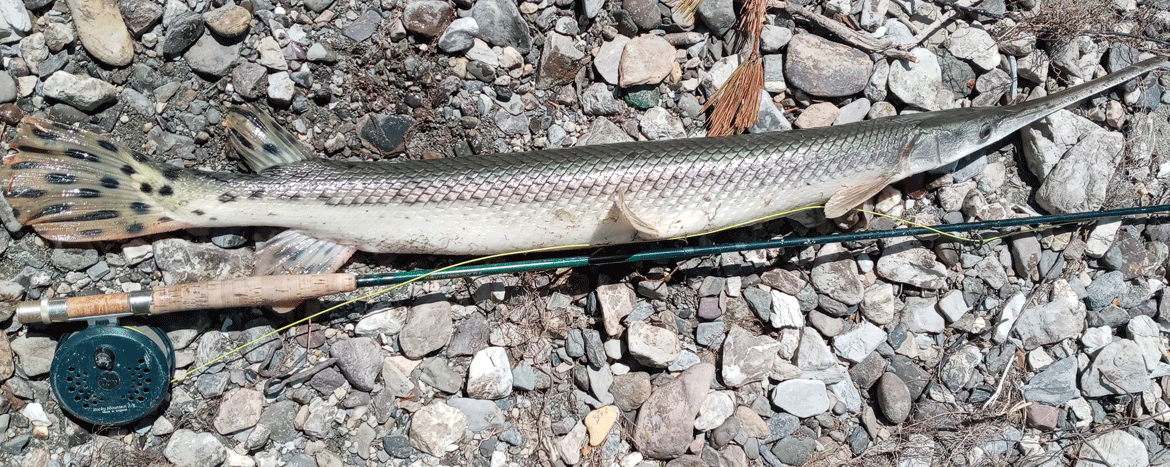
The most distinguishable feature of the longnose gar (Lepisosteus osseus) is their long, bluntly pointed snout filled with sharp teeth. They have a very long, narrow, white body with an olive brown to dark green back and a brown or black stripe running along either side.
Inhabiting the Atlantic slope drainages from New Jersey to Florida, longnose gar can be found from the St. Lawrence River and Lake Champlain, in each of the Great Lakes (except Lake Superior) and the Mississippi River basin, as well as down to Gulf Coast drainages. In Vermont longnose gar can be found in Lake Champlain and a few of its lower tributaries.
Habitat
These fish usually congregate in highly vegetated sections of lake shores and in the slower sections of rivers. They can, at times, be found in rivers with moderate flows.
Instead of using just their gills to absorb oxygen, longnose gar can use their swim bladder as a primitive lung to breathe atmospheric air. Their swim bladder is attached to their esophagus which allows the fish to take in oxygen by gulping in air at the surface. Furthermore, the structure of the swim bladder’s inner wall allows for the transfer of gases into and out of the fishes’ blood stream. This adaptation allows longnose gar to tolerate waters with lower dissolved oxygen levels.
Reproduction
Longnose gar congregate and move to shallow areas in the late spring and early summer months either in lakes or tributary streams. They do not build nests. One female may mate with several males to fertilize about 4,000 to 77,000 adhesive eggs that will be spread along the bottom.
Young longnose gar grow extremely fast the first year following hatching, reaching up to 20 inches in length.
Diet
Young longnose gar prey on invertebrates until they are around two inches long when they switch to consuming fish. As adults, longnose gar are considered opportunistic feeders, feeding voraciously on several fish species, crayfish, frogs, and even small rodents.
Management
This species has no minimum length but there is a five fish daily limit. Work conducted by Vermont Fish & Wildlife staff to help conserve these populations includes, but is not limited to:
- Improving aquatic organism passage.
- Protecting and restoring fish habitat.
- Monitoring local fish communities.
- Engaging in regulatory proceedings, providing direct input to protect aquatic habitats on individual development projects through Act 250, Section 248, Stream Alteration, Dam Safety, hydroelectric relicensing, water withdrawals, etc.
Status
This species is not listed as threatened or endangered and is not currently a species of greatest conservation need in Vermont.
Fun Facts
- Other common names: gar, garpike, billfish, striped billfish, northern mailed fish, needlenose, lépisosté osseux
- The longnose gar is a living dinosaur that’s been around for over 100 million years!
- Longnose gar are often unfairly blamed for eating other more “desirable” sport fish species, but this isn’t true. Despite their menacing looking long snout and razor-sharp teeth, gar can’t actually open their mouths very wide, so they feed almost exclusively on small minnows and abundant juvenile panfish.
